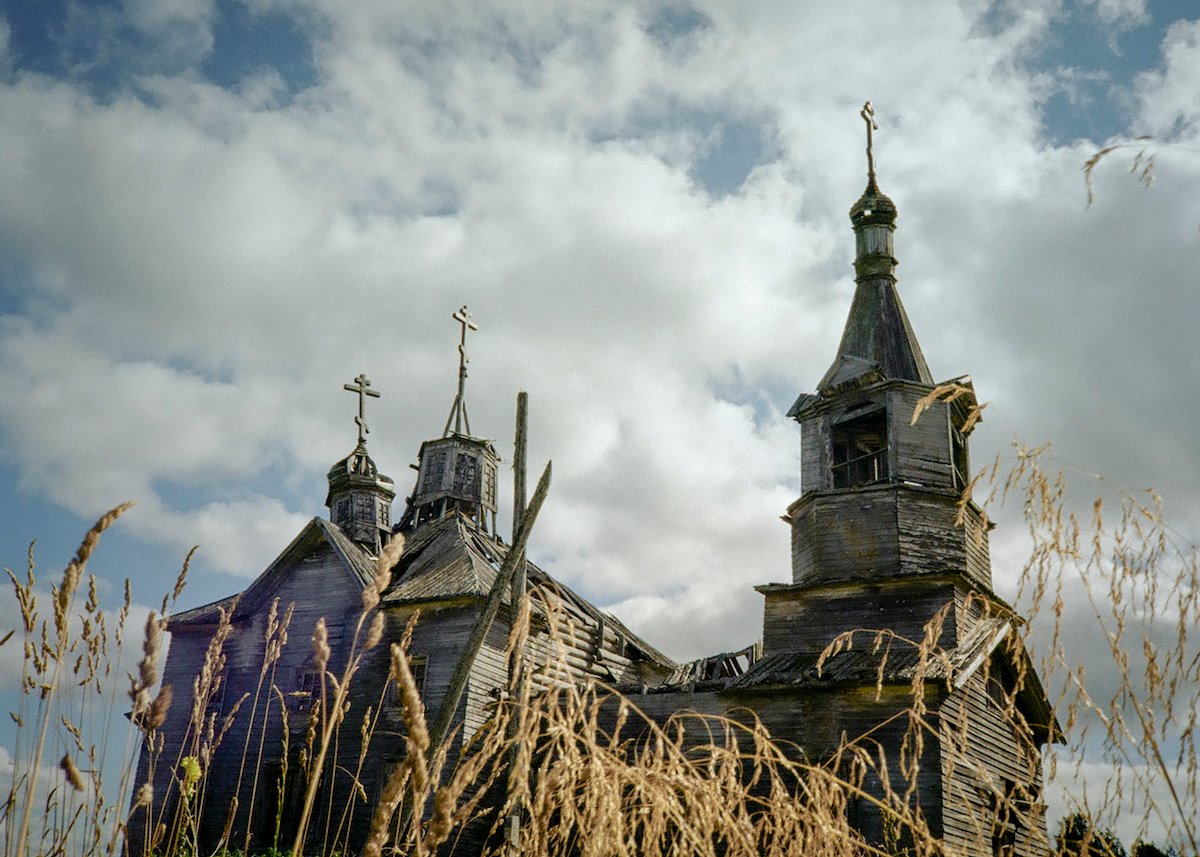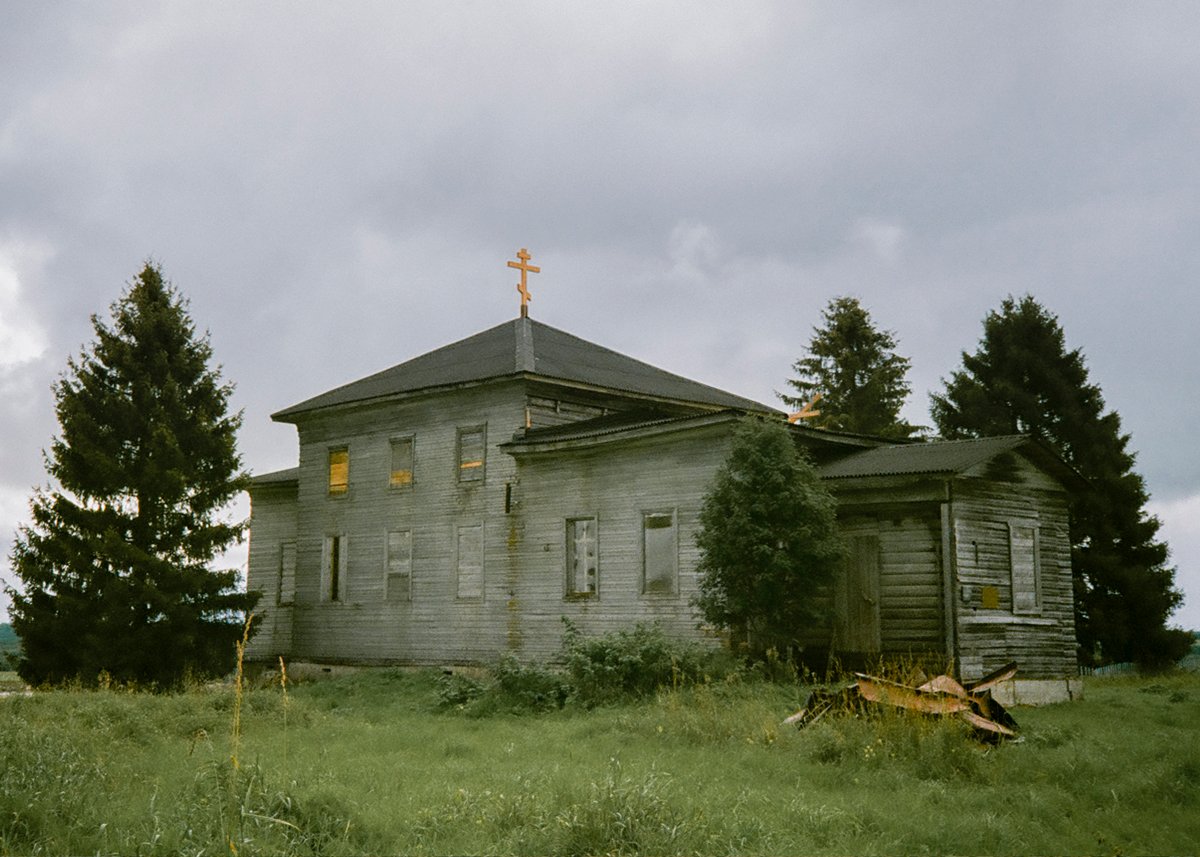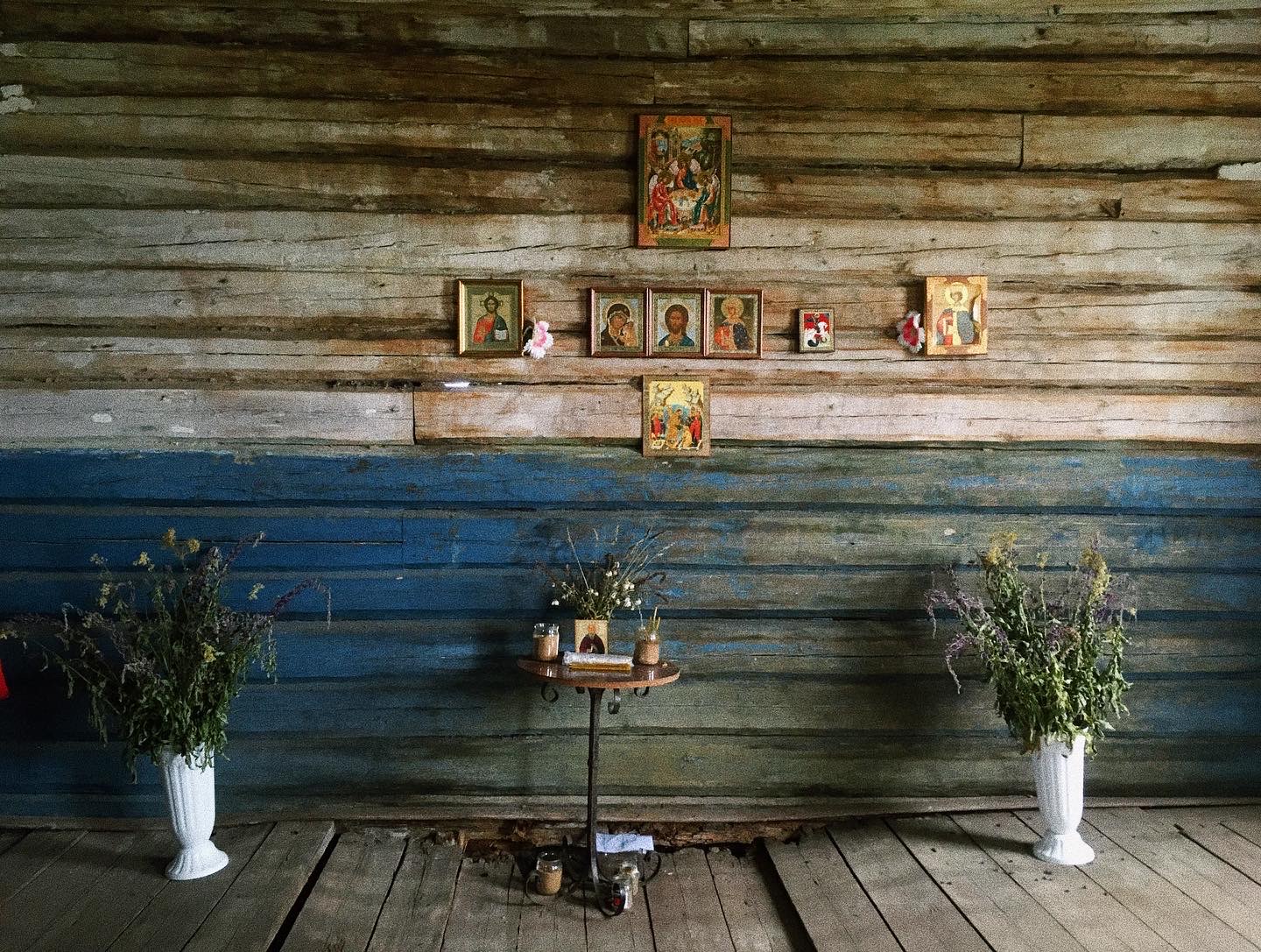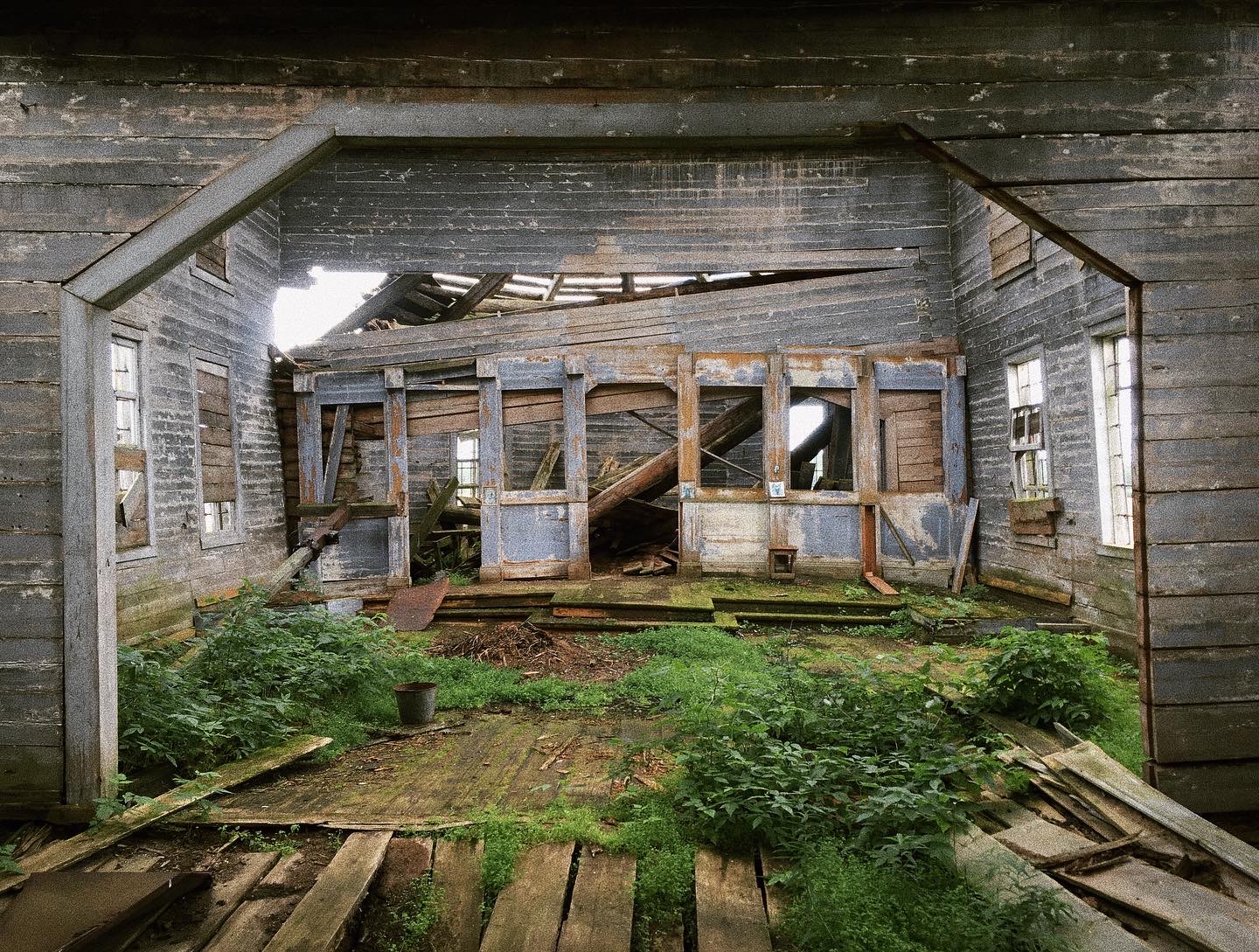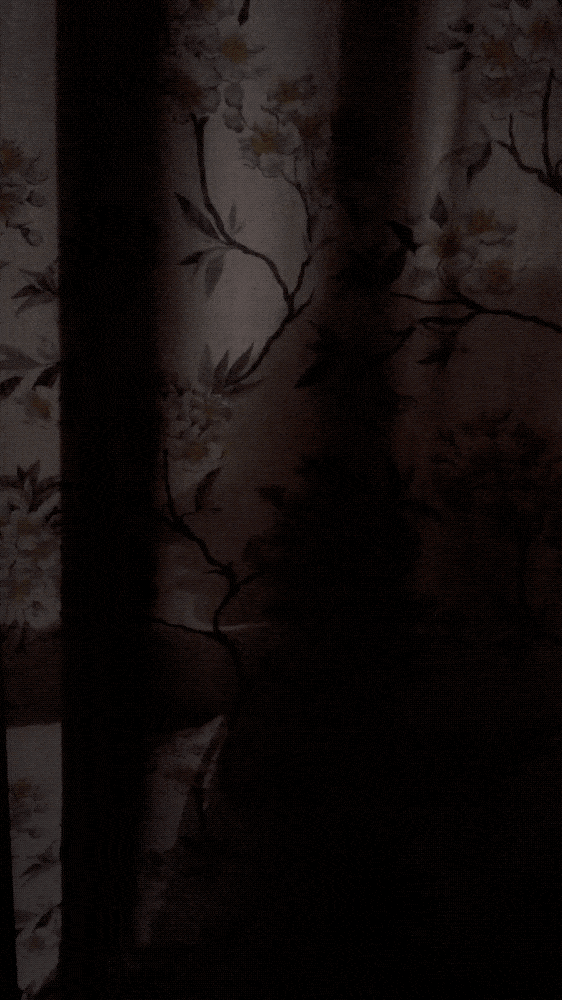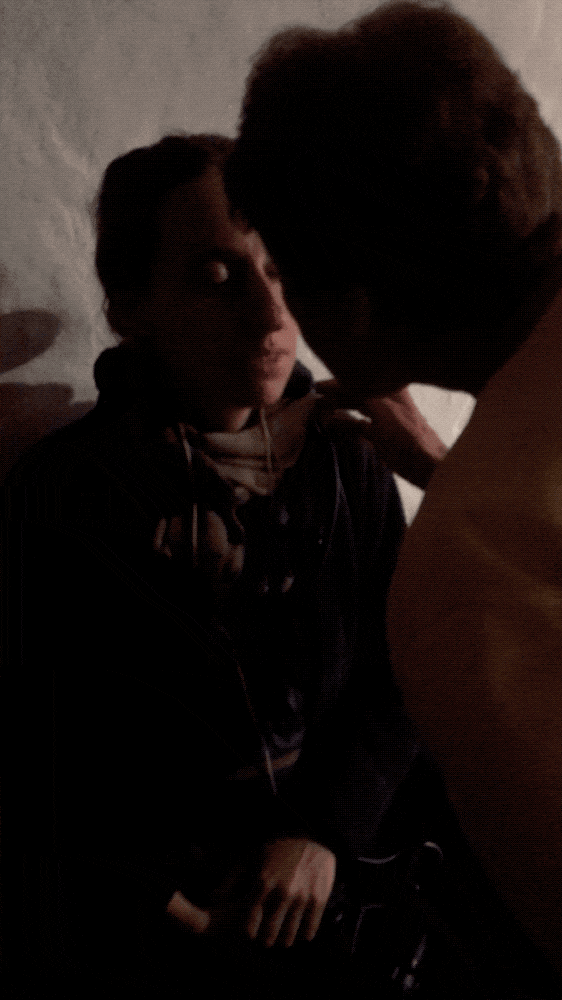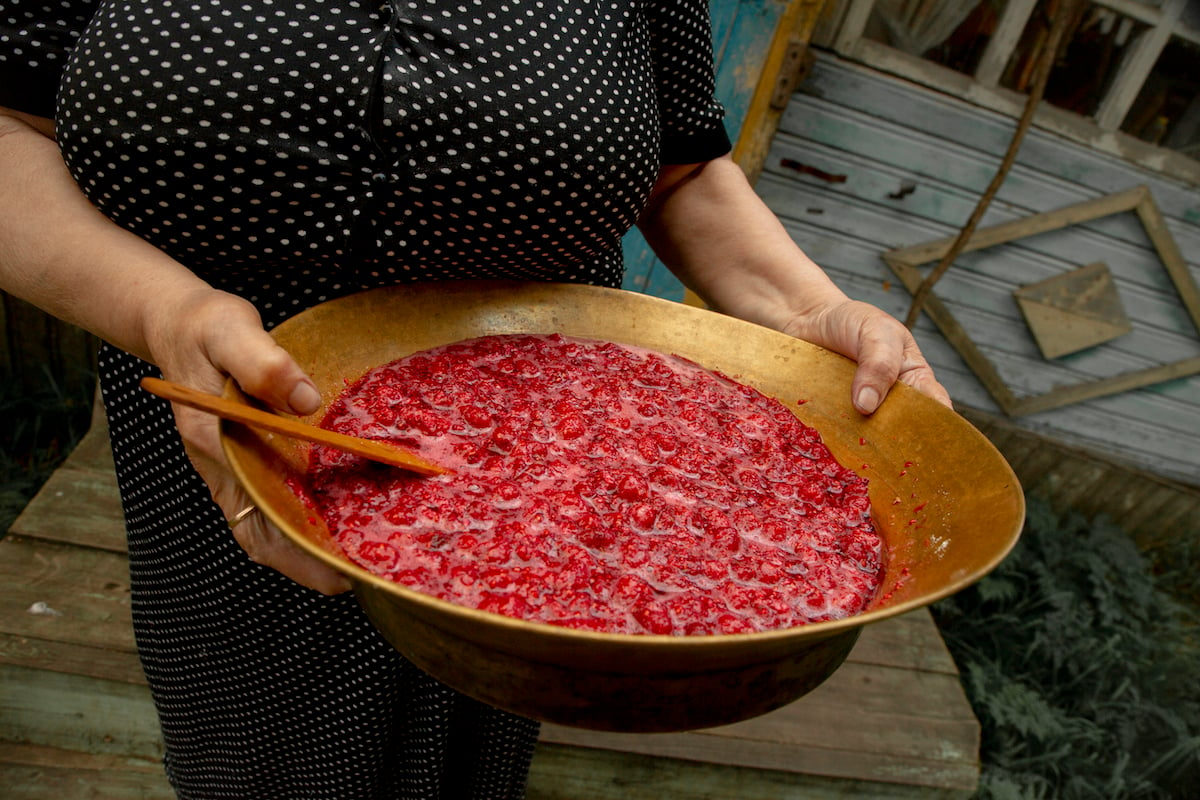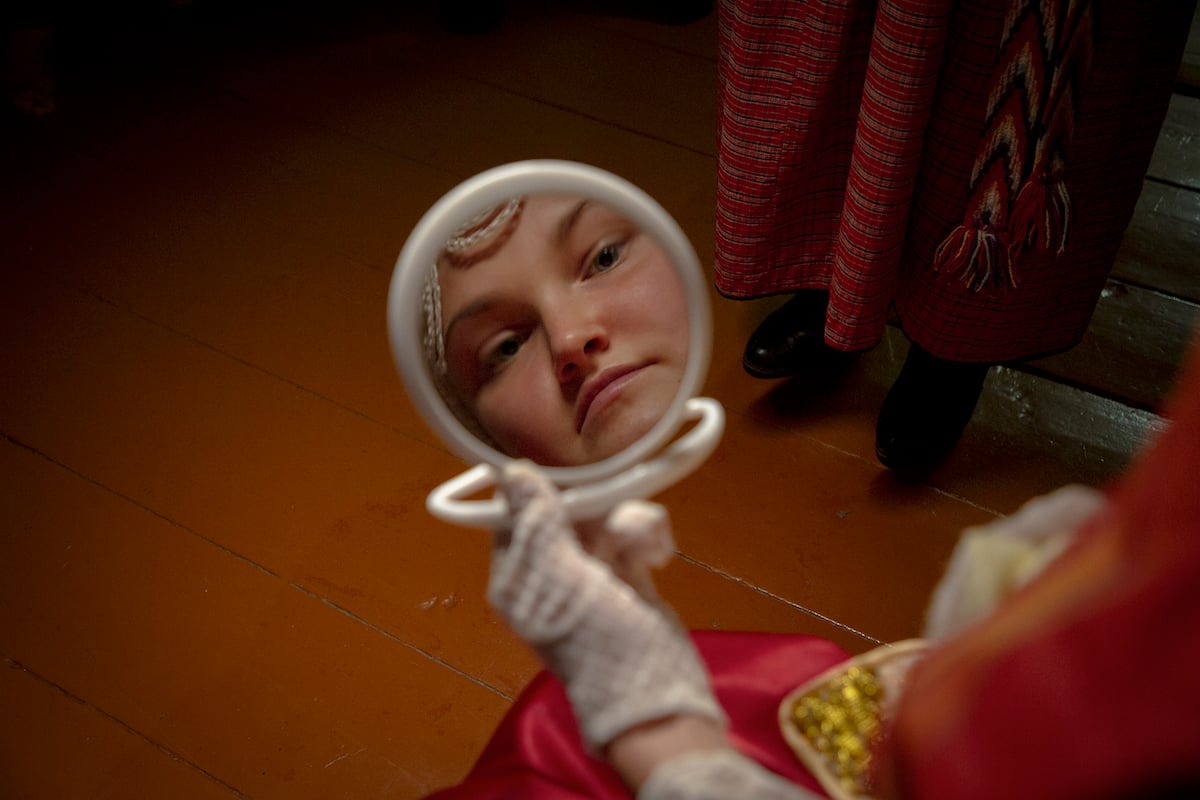A pagan matriarchy in the Russian North clings to fading traditions
Filmmaker Sasha Kulak and art curator Yulia Kurmangalina have made several art projects together, including documentary musical Ok Good, and Shirota and Dolgota, dedicated to finding and supporting art by people who are socially excluded or live in remote areas. This year, the duo set off on a journey to the Pinezhsky region, a remote spot in the Russin North famous for its mystical beliefs, spells, and ancient wooden churches.
The vast territories of Pinezhsky are covered with woods and inhabited more by wild animals than by people. Roads can be described as almost non-existent, and at least twice a year the thin paths of mud connecting hamlets to the outside world are swept away by the river Pinega. Local people live mostly from the forests themselves, fishing, and gardening. The Western world got a glimpse of the region a couple of years ago, when Italian Vogue shot a fashion story in the local village of Chickenskaya. The model wore fake moustaches, a kitsch cross, and posed in front of disintegrating wooden churches. The shoot went viral, and locals began to dislike people with cameras. This, however, only amounts to a small number of the Russian population: during winter, only one man lives in Chickenskaya.
It took us two days to reach Arkhangelsk from St Petersburg by car, and another two days before we arrived at our first destination, a village called Verkola. To get there, we had to cross the river Pinega with a boat set in motion with ropes and a car engine. Some 300 people live in Verkola in the summer, and only about 70 in the winter. Amateur ethnographer Tatyana Minina, keeps alive many of the traditions there, with a particular passion for ancient costume. She collects dresses and sews pieces she can’t find, meticulously crafting the traditional Russian headwear called kokoshniki. She invited us to her house and showed her treasures with the help of her young relative.
In times past, girls in the region would begin to collect their dowries long before a prospective wedding. They wove pieces of fabric, which they would later present to their husband and his family. The core part of the dowry was a large sundress and an embroidered headband called a povyazka; the whole outfit could weigh up to 40 kg. Dressed to impress, girls went to local parties called mechishche, where they interacted with potential spouses. Poor girls often couldn’t afford the more exquisite headbands, so would attend wearing a simple headscarf. A headscarf was also an essential part of the wedding, under which a bride would keep her face covered entirely during most of the ceremony. Only a husband was allowed to take off the veil and see her face.
Brides would also wear a blue dress of coloured linen called a sinyak. She would wear the same dress after death, in her coffin. Initially richly embroidered, the dress would become more simple as the woman grew older and cut away the finery for use elsewhere.
The next time we saw this dress, it was being worn by Lubov Aleksandrovna. She made her living in the village tending to furnaces, but at funerals, she would act as a traditional mourner, weeping at the funeral. “It is a type of theatre. Your dress up, get in the mood, and perform. It’s an art, not everybody can do it,” she says. The ritual is hoped to soothe the grievance of the living, and help them to accept the death of a loved one.
Other local traditions are not rooted in material goods, but spirits and spells. Here, in isolated villages, spells remain a readily available “medicine” where real medical care is sparse. They are able to counter everything from colic to curses. Or, as ethnographer Minina explains: “I dyed my hair once, and it was looking great. But then I walked down into the village, and I felt a pulsating pain in the cheek — it was excruciating. My sister told me I had been jinxed and advised on the right spell I could use to counter it. After I read it, the pain was gone.”
But curses are not the only supernatural threats with which villagers need to contend. When Leonid Afanasievich, a local ethnographer in the nearby village of Kevrola, invited us to stay with him, he warned us strongly against using the outside bathhouse late at night. He told us that there were two spirits of the bathhouse: Obderiha and Baynushka. Between 11pm to 6am, the evil spirit Obderiha holds sway. “There was a villager who doubted the existence of Obderiha, so he went bathing after 11pm. The next day he was found dead, his body was torn with claws,” he said. Baynyshka, on the other hand, is a good spirit, and each time Afanasievich goes to the bathhouse, he puts out two buckets of warm water: one for him, and another for the spirit.
In the Pinega river basin in particular, hiccups are seen as an evil spirit that is cast by a sorcerer. Hiccups attack mainly women, and once someone is “infected” it’s almost impossible to cure. There are two forms of hiccups here: silent hiccups, called nemukha, and loud ones called gohovorukha. During an attack of nemukha, women will, allegedly, mumble, while govorukha is meant to make its victim speak or swear involuntarily. Both are triggered by any strong irritant, be it a smell, a sound, a person or even food.
From a scientific point of view, hiccups are a neuropsychic disorder caused by hypersensitivity. But here, they can also be seen as one of the few ways available to women to express their anger or irritation within the tight bonds of traditional culture. In the past, those possessed by hiccups were rarely blamed for their behaviour, but instead treated as victims and accepted into society. During the Second World War, women imitated hiccups to avoid being sent on harsh jobs, such as fishing out logs from the river. Afanasievich states that victims of hiccups can still be found around the Pinega and Mezen river basins, but are much rarer than in the past. Such specific disorders are deeply rooted in local traditions, and will go extinct as that culture slowly fades.
Travelling along the Pinega river, there is a sense that we may be among the last people to witness this culture. Which is why, before everything turns history, we decided to document this unique society on film. We filmed local choirs, singing babushkas, and scenery that nurtured local magical beliefs in a musical documentary. We also realised that this society can only be described as a matriarchy. Women are a force cementing power in this community. Beliefs, spells, and traditions are passed on down the female line. Despite the need to both earn money and run the household, they are often more grounded than local men, some of whom are touched by the epidemic of alcoholism here.
One of our last destinations, the village of Edoma, is particularly famous for its wooden churches. We found another sightseeing point there, deep in the woods. There is something special about its primeval power. If you gaze long into the forest, the forest will gaze back into you. It’s easy to imagine how all of these churches, bathhouse spirits, and women possessed by hiccups will be swallowed by this immense green mass. The forest was here long before us — and it will be here after we are gone.
Thanks to those who took part in creating this project:
Dekabristen e.V. / Anna Artemieva / Tema Polyakov / Zhitov Leonid Afanasievich / Alina Olga Vitalievna / Minina Valentina Ivanovna / Sergey Minin / Vladimir Petrovsky / Anna Zlotko / Stepan Bobrecov / Nikita Petrov
